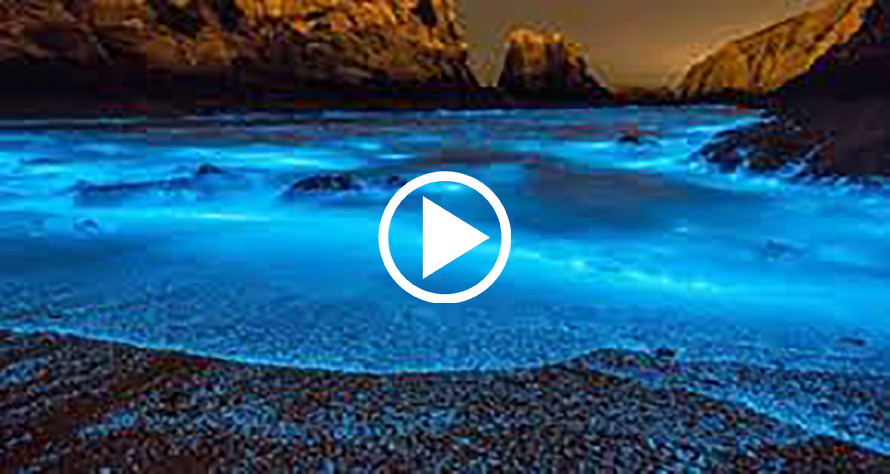Since early May, bioluminescence has been reported on the coast from Los Angeles in the United States to Baja California in Mexico.
According to expert Michael Latz of the Scripps Institute of Oceanography at the University of California at San Diego in the United States, this event usually occurs every few years due to an outbreak of a microscopic seaweed called Lingulodinium polyedra.
They are unicellular plankton distributed mainly in the Pacific Ocean, capable of bioluminescence and self-produced food by photosynthesis.
Lingulodinium polyedra contains a reddish brown pigment that helps resist the harmful rays of the sun. When the conditions are favorable, they proliferate in a large collection which causes the color of the sea water to change, causing the phenomenon of “red tide”.
At night, this algae can also turn green as a defense mechanism to warn against certain predators. Light is produced by small structures called scintillions inside the cytoplasm of an organism. Lingulodinium polyedra bioluminescence often occurs when stressed by water surface agitation or a sharp drop in water pH.

Red tides and glowing beaches are often unpredictable. No one knows when they will start or how long they will last. This year’s “light show” becomes even more special when it comes at a time when beaches in the United States have just reopened after more than a month of lockdown due to the impact of Covid-19.
Although the factors that lead to red tides are not fully understood, scientists say the event is occurring with increasing frequency around the world. The cause could be climate change, explained Latz.


